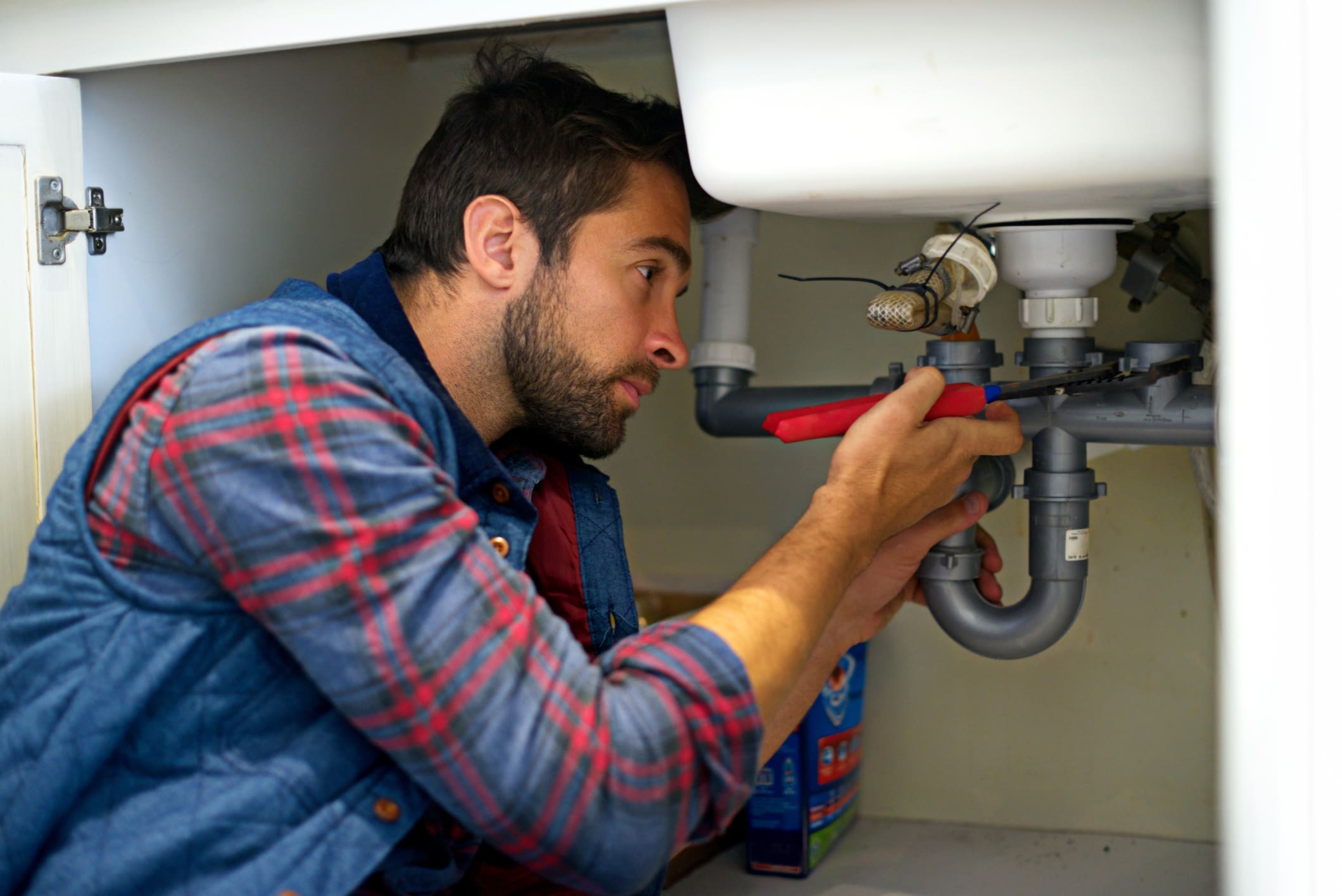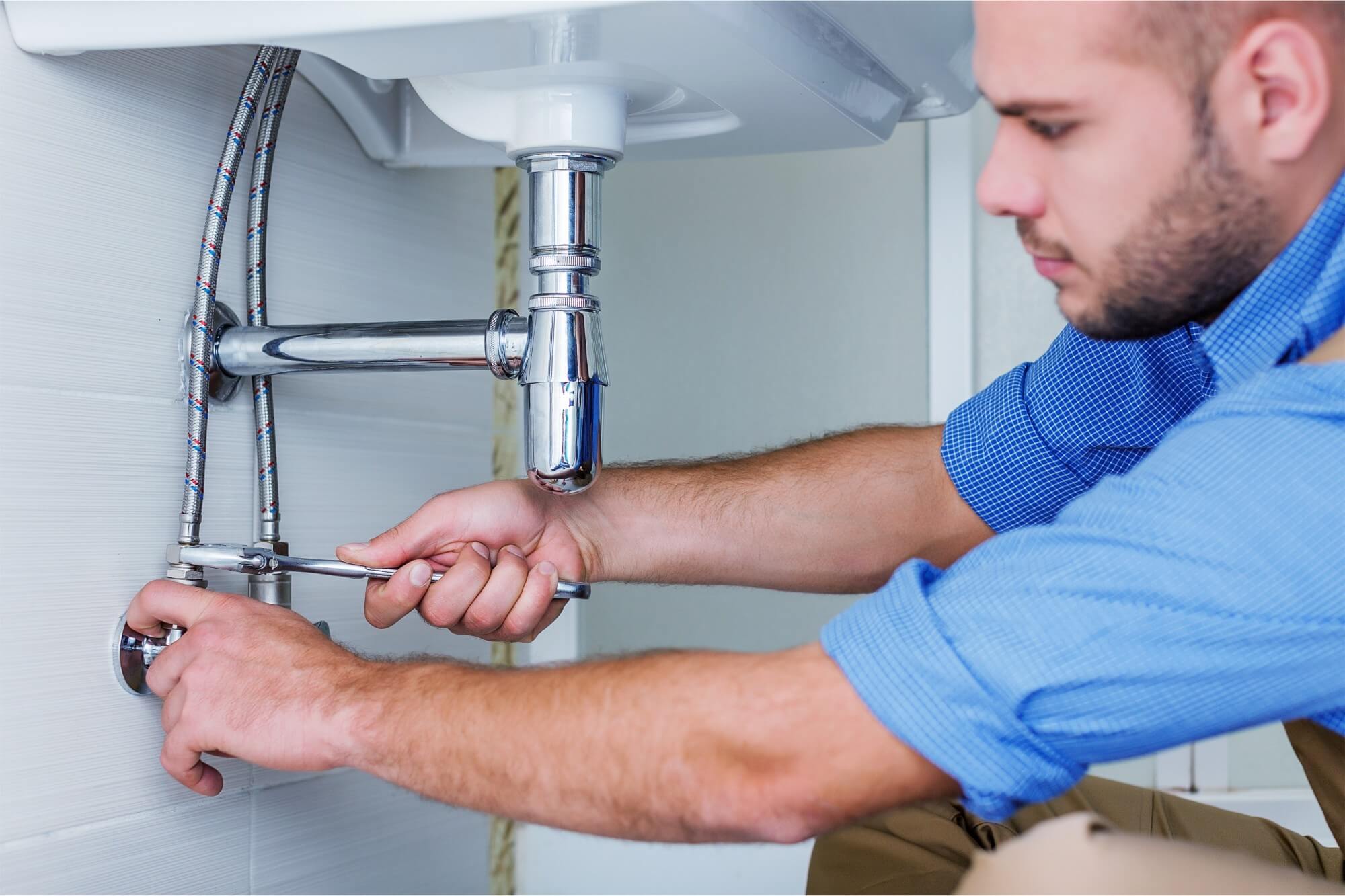Emergency Water Leaks: When to Bring in a Licensed Plumber Immediately
Emergency Water Leaks: When to Bring in a Licensed Plumber Immediately
Blog Article
Usual Pipes Problems Every Homeowner Must Know
Property owners commonly run into a variety of plumbing concerns that can interrupt every day life. Usual issues include leaking taps, blocked drains pipes, and running toilets. These concerns normally stem from worn-out components or debris buildup. In addition, low tide pressure and ruptured pipes can indicate much deeper problems. Recognizing these challenges is necessary for efficient upkeep. There are various other much less noticeable worries that can arise, which warrant closer examination.
Dripping Taps
Dripping faucets can be a frustrating annoyance for property owners. These consistent drips not just produce a bothersome audio however also cause drainage and boosted energy costs. A dripping tap usually results from worn-out washers, O-rings, or seals, which weaken over time as a result of routine use and exposure to water. Sometimes, the faucet's interior parts may be worn away or damaged, demanding a more comprehensive repair or replacement. Recognizing the source of the leak is important; home owners might require to take apart the tap to examine its components carefully. Regular upkeep can help protect against leaks, including cleaning aerators and examining for indicators of wear. Resolving a leaking tap immediately can save water and decrease expenses, making it a manageable yet necessary task for house owners to tackle in preserving their plumbing systems efficiently. Correct interest to this common problem can bring about an extra comfy living atmosphere.
Clogged Drains
Many house owners experience the frustration of clogged drains pipes at some point. This typical plumbing issue can develop from different causes, including the accumulation of hair, soap deposit, food fragments, and grease. These products can create clogs that prevent the circulation of water, bring about slow water drainage or total stoppage.In kitchens, grease and food scraps are often the culprits, while bathrooms frequently deal with hair and soap build-up. Regular maintenance, such as utilizing drain strainers and avoiding pouring fats down the sink, can help avoid clogs.When a blockage does happen, house owners may attempt to utilize a plunger or a commercial drainpipe cleaner as first solutions. Consistent problems may need professional help to stay clear of damage to pipes. Comprehending the reasons and prevention techniques for clogged drains can conserve house owners time and cash, guaranteeing a smoother plumbing experience

Running Toilets
Running commodes are an usual concern that can stem from different reasons, consisting of damaged flappers and chain problems. The constant running not just drainages yet also results in increased utility costs. Attending to these concerns quickly can restore and protect against more problems performance to the plumbing system.
Reasons For Running Commodes
A consistent circulation of water from a toilet can be both frustrating and inefficient, commonly indicating underlying issues within the pipes system. One common cause is a worn flapper valve, which might not develop a correct seal, permitting water to continuously leakage into the bowl. In addition, a malfunctioning fill valve can lead to extreme water flow, adding to the trouble. Misaligned float systems might likewise trigger the bathroom to run as they fall short to regulate the water degree suitably. One more possible issue is mineral build-up, which can obstruct parts and hinder their performance. Recognizing these causes promptly can assist homeowners attend to the problem prior to it escalates, making certain reliable procedure of their pipes system.
Repercussions of Constant Running
Frequently ignored, the consequences of a constantly running toilet can considerably influence both water usage and household expenditures. A running bathroom can throw away an average of 200 gallons of water daily, resulting in raised water bills and unnecessary resource intake. This excessive water usage not just stresses the household budget plan yet likewise adds to ecological worries, especially in locations facing water scarcities. Additionally, the consistent noise of running water can be a source of aggravation, interrupting the tranquility of the home - Plumber. Long term problems might lead to even more substantial pipes issues if left unaddressed, resulting in additional economic problems. House owners ought to recognize the value of timely repair services to reduce these unfavorable results and keep a reliable plumbing system
Repairing Running Bathroom Issues
Commodes that continually run can be a frustrating concern for home owners, but determining the cause is the primary step toward an efficient solution. Common causes include a defective flapper, which may not create a proper seal, allowing water to get away into the bowl. Property owners should check the flapper for wear and replace it if required. In addition, the fill shutoff could be malfunctioning, triggering excess water to stream constantly. Replacing this component or adjusting might resolve the issue. One more potential culprit is a misaligned float, which can be adjusted to the proper height. Routine maintenance and prompt repair work can stop running toilets, guaranteeing both water conservation and cost financial savings on energy bills.
Low Tide Pressure
Low tide stress can be an aggravating experience for property owners, typically materializing as a weak stream from faucets and showerheads. This concern can come from various causes, including debris accumulation in pipes, rusty pipes, or problems with the community water supply. Home owners may originally see low tide stress in particular areas of the home, but it can rise to a much more widespread issue if not resolved promptly.In some situations, malfunctioning pressure regulatory authorities can additionally be accountable for inadequate water circulation. Regular upkeep, such as flushing the water heating unit and looking for obstructions, can assist minimize these problems. If reduced water pressure continues, it may be essential to seek advice from a professional plumbing professional to identify and solve the underlying reason. Determining the resource of reduced water pressure is vital for restoring appropriate water circulation and ensuring a functional plumbing system.
Ruptured Pipes
Burst pipes can be a severe pipes problem, usually resulting from the same aspects that add to low tide stress, such as temperature level variations and aging framework. When water freezes within pipes, it broadens, enhancing stress until the pipeline can no more have it, resulting in a tear. Furthermore, deterioration from extended direct exposure to water can deteriorate pipelines, making them prone to breaking under typical pressure.Homeowners may see indicators of a ruptured pipe with unexpected water leakages, wet spots on wall surfaces or ceilings, and an unexpected increase in their water expense. Immediate action is vital; falling short to resolve a ruptured pipe can result in extensive water damages, mold and mildew development, and costly repair services. Routine assessments and maintenance of plumbing systems can help avoid this issue. Protecting pipes in cooler locations and changing old piping can greatly reduce the threat of ruptured pipes, protecting the home's plumbing stability.
Water Heater Issues
Exactly how can home owners recognize water heating unit issues prior to they intensify? Normal evaluation and upkeep can assist spot prospective issues early. House owners need to try to find indications such as inconsistent water temperature level, uncommon noises, or a decrease in hot water supply. Leaks or pools around the system may show a breakdown that calls for prompt attention. The appearance of rust or sediment accumulation can additionally signify the demand for maintenance.Additionally, homeowners must keep track of the age of their hot water heater; most devices have a lifespan of 8 to 12 years. If the heater is approaching this age and showing indicators of wear, it might be time to mirror on substitute. Routine flushing see this page of the tank can stop debris build-up, extending the system's life. By staying watchful and attending to problems quickly, property owners can avoid pricey fixings and assure their water heating system runs effectively for several years ahead.
Drain Line Issues
Lots of homeowners might come across drain line problems eventually, affecting their pipes system's total capability. Usual concerns consist of clogs, tree origin breaches, and pipeline damages. Obstructions often result from the accumulation of oil, hair, and foreign things that obstruct the flow of wastewater. Tree roots can penetrate sewage system lines, creating leakages and fractures. Furthermore, aging pipes may damage or rust, leading to more complications (Drain Services). Indications of sewage system line problem include slow drains pipes, undesirable odors, and sewer back-ups, which can present health and wellness dangers. Homeowners need to address these problems without delay to prevent check here comprehensive damage and pricey repair services. Routine upkeep, such as scheduled examinations and cleaning, can help avoid significant issues. In serious cases, specialist intervention might be needed to repair or replace broken sections of the sewage system line. Recognizing these prospective problems can aid house owners take proactive steps to preserve their plumbing systems properly
Often Asked Questions
Exactly How Can I Prevent Pipes Problems in My Home?
To stop plumbing issues, regular maintenance is crucial. House owners should check pipes for leakages, clean drains pipes, and monitor water pressure. In addition, enlightening themselves regarding correct usage can substantially decrease the danger of future plumbing concerns.
When Should I Call a Plumber As Opposed To Repairing It Myself?
When to call a plumbing frequently depends on the seriousness of the problem, figuring out. Significant leaks, persistent clogs, or unfamiliar issues warrant specialist help, making certain safety and security and avoiding further damages instead of risking personal efforts at repair.
What Are the Indications of Hidden Plumbing Leaks?
Indications of concealed plumbing leakages consist of inexplicable water costs, wet places on wall surfaces or ceilings, mold and mildew development, and a stuffy smell. These indicators commonly recommend underlying concerns that call for expert evaluation and repair work for resolution.
How Commonly Should I Have My Pipes Checked?
Routine pipes examinations are advised each to 2 years. This frequency aids determine potential issues early, ensuring the system continues to be reliable and lowering the danger of expensive repair services or unforeseen emergencies in the future.
Exist Do It Yourself Solutions for Minor Plumbing Issues?

Report this page